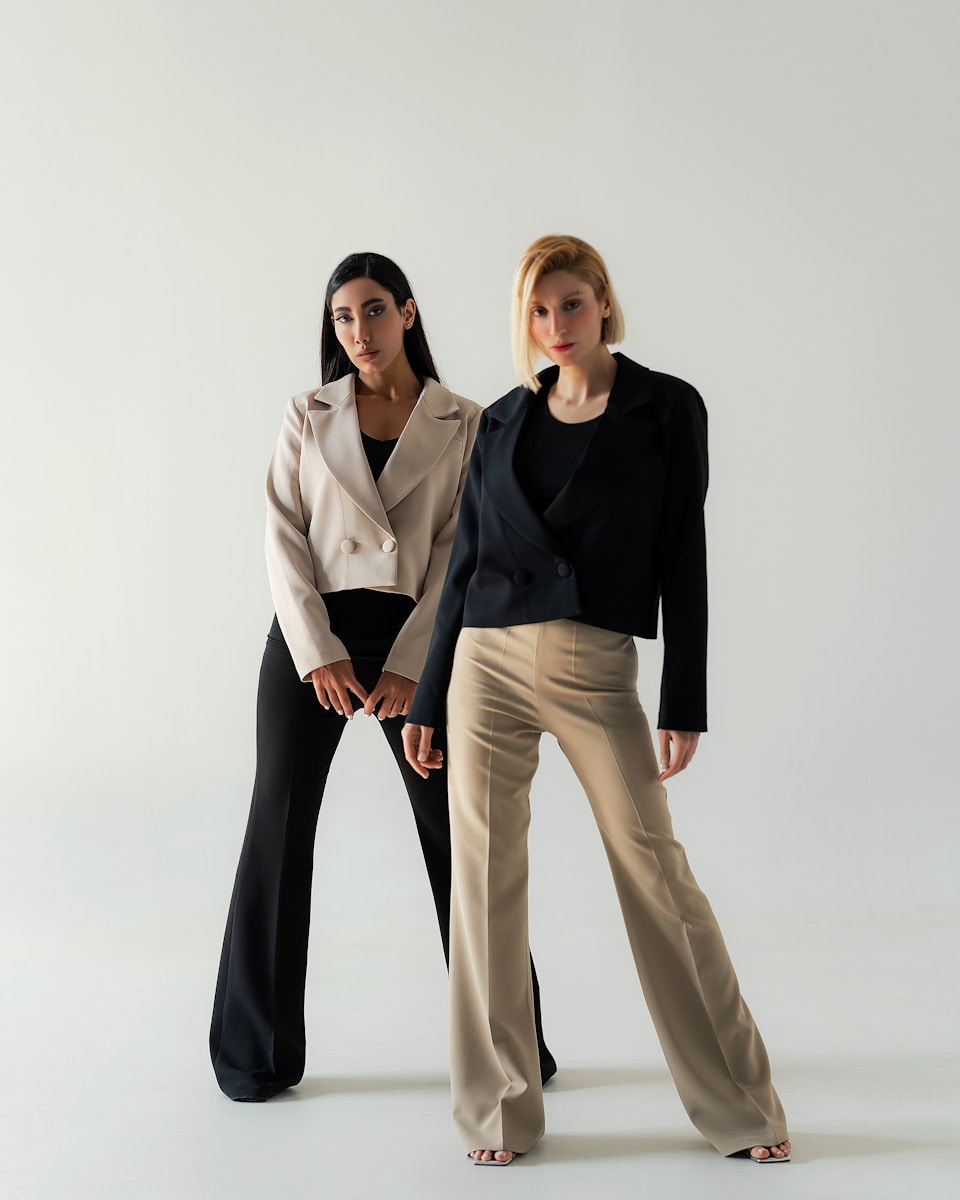In an era where fashion consistently reinvents itself, certain staples stand the test of time — not just for their aesthetic, but for their cultural resonance. Among them, belted blazers and pleated skirts have emerged from the confines of traditional school uniforms and corporate attire into the realm of high fashion and self-expression. These garments, once symbols of conformity, have undergone a sartorial renaissance. Designers, influencers, and style-conscious individuals are transforming them into tools of empowerment, identity, and bold creativity.
This essay examines the evolution of belted blazers and pleated skirts, analyzing how these “uniform staples” have been reimagined for modern sensibilities. Far from relics of institutional dress codes, they are now canvases for playful rebellion and stylistic innovation.
The Origin of Uniform Staples: A Brief Historical Context
Uniforms — particularly in schools and offices — have long served as visual markers of discipline, structure, and hierarchy. The pleated skirt, with roots in British and Japanese school systems, symbolized modesty and decorum. Belted blazers, traditionally tailored with sharp lines and stiff shoulders, signified order, leadership, and seriousness.
The underlying intention was clear: strip away individuality in favor of unity and collective identity. In schools, students wore uniforms to focus on academics; in professional settings, blazers communicated professionalism over personality. But fashion, inherently cyclical and reactive, has a way of subverting such rigid ideals. By the late 20th and early 21st century, designers began to reinterpret these pieces — not to erase their roots, but to rewrite their narrative.
From Obedience to Empowerment: A Sartorial Subversion
Today, wearing a pleated skirt or belted blazer no longer implies blind conformity — it often signifies the opposite. Contemporary fashion sees these garments as blank slates, imbued with the potential for self-definition. A blazer cinched at the waist with a dramatic leather belt can suggest power, authority, or even sensuality. A pleated skirt worn with combat boots or a graphic tee rebels against its own prim origins.
This transformation is especially poignant for women, who have long been subjected to dress codes that suppress autonomy. Designers like Miuccia Prada, Thom Browne, and Alexander McQueen have leaned into the irony of schoolgirl aesthetics and corporate codes, flipping them into statements of independence and irony. The pleated skirt, for instance, may still suggest innocence — but when paired with an oversized bomber or latex gloves, it tells a far more complex story.
Street Style and the Rise of the “Neo-Uniform”
One of the most significant drivers of this reimagination is streetwear culture, which has blurred the lines between formal and casual, masculine and feminine, tailored and deconstructed. In cities like Tokyo, London, and New York, pleated skirts are paired with sneakers, corsets, or mesh tights, creating eclectic looks that feel fresh and subversive. Belted blazers, meanwhile, are styled with biker shorts, baseball caps, or worn as dresses — often with exaggerated shoulders and cinched waists, reminiscent of 1980s power suits, but with a contemporary twist.
The “neo-uniform” aesthetic celebrates contradiction. It pulls from punk, prep, goth, and glamor in equal measure. A student-inspired outfit might include a plaid pleated skirt, thigh-high boots, and a belted blazer layered over a hoodie — an ensemble that defies easy categorization. What unites such looks is their conscious play on structure and chaos — the uniform reimagined not as a tool of repression, but as an instrument of expression.
The Genderless Appeal of Tailored Codes
Another noteworthy evolution in the styling of blazers and pleated skirts is their growing adoption across gender identities. In recent years, pleated skirts have been proudly worn by men on runways and red carpets, with celebrities like Harry Styles, Bad Bunny, and Oscar Isaac embracing the look. This signals a shift away from gendered fashion norms and toward a more inclusive and fluid understanding of clothing.
Belted blazers, once a staple of women’s “workwear,” are now styled in unisex collections with broader appeal — oversized fits, deconstructed elements, or asymmetric belts that resist categorization. This democratization of fashion allows more people to engage with traditionally coded garments in ways that feel authentic to them.
High Fashion’s Take: Reconstructing the Uniform
The influence of high fashion cannot be ignored in the reinvention of these wardrobe icons. At Paris, Milan, and New York Fashion Weeks, collections consistently reinterpret belted blazers and pleated skirts in radical ways.
Miu Miu, for instance, famously introduced hyper-short pleated skirts worn low on the waist, paired with cropped blazers and loafers — evoking a rebellious twist on prep-school aesthetics.
Balmain has shown double-breasted belted blazers in neon hues with exaggerated peplum shapes, blending corporate chic with futuristic glamour.
Thom Browne plays with androgyny by mixing gray blazers with kilts — blending schoolboy motifs with high tailoring in surreal, theatrical ways.
These designers don’t just revive the uniform — they deconstruct and rebuild it, suggesting that conformity and individuality can coexist in the same silhouette.
Social Media and the Democratization of Reinterpretation
While designers may initiate trends, it is on platforms like Instagram, TikTok, and Pinterest where these looks gain cultural traction. Influencers, stylists, and everyday users remix belted blazers and pleated skirts into thousands of variations, offering visual proof that these garments are endlessly adaptable.
TikTok’s “#academia” aesthetics — from dark academia to light academia and chaotic academia — embrace uniforms as markers of intellectual chic. The blazer-and-skirt combo becomes a symbol not of obedience, but of aesthetic intent. On Instagram, you’ll find stylists cinching vintage blazers with wide belts, pairing them with voluminous skirts or slouchy trousers, showcasing a hybrid of elegance and ease.
Through social media, the power to reimagine is no longer confined to luxury houses — it belongs to everyone.
Cultural Symbolism: More Than Just Fashion
Beyond style, these garments also carry symbolic weight. In a world increasingly conscious of systems — patriarchy, capitalism, classism — repurposing uniform codes becomes a quiet form of resistance. When a young woman wears a belted blazer over a lingerie slip, she disrupts the gendered language of clothing. When a man wears a pleated skirt unapologetically, he challenges societal definitions of masculinity.
In this context, fashion becomes a conversation — between tradition and rebellion, between the past and the present. Belted blazers and pleated skirts act as sartorial palimpsests, holding traces of former meanings while inviting new interpretations.



